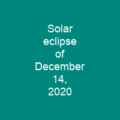Eclipses: A Celestial Dance
Imagine a cosmic ballet where celestial bodies perform a delicate dance, sometimes obscuring each other’s light. This phenomenon is known as an eclipse, and it’s not just a spectacle; it’s a profound event that has captivated humanity for millennia.
The Basics of Eclipses
When one object passes in front of another, blocking its light, we call this an eclipse. This alignment is known as a syzygy. An eclipse can be either a complete (occultation) or partial (transit), depending on whether the observer sees the entire body hidden or just part of it.
Eclipses: A Rare Occurrence
But why do eclipses happen so rarely? The answer lies in the orbits and alignments of celestial bodies. Eclipses only occur during specific times called eclipse seasons. If both orbits were perfectly circular, each eclipse would be the same type every month. However, due to their elliptical paths, this is far from reality.
The Anatomy of an Eclipse
During an eclipse, the region of a shadow is divided into three parts: umbra (the darkest part), antumbra (where only partial shading occurs), and penumbra (a lighter shade). A total eclipse happens when you are within the umbra, while an annular eclipse occurs in the antumbra. Partial eclipses happen in the penumbra.
Calculating Eclipses
The length of the umbra’s cone-shaped shadow can be calculated using a simple formula: L = r ⋅ Ro / (Rs – Ro). Here, Rs is the radius of the star, Ro is the occulting object’s radius, and r is the distance from the star to the occulting object. For Earth’s shadow during a lunar eclipse, this length can be up to 1.384×106 km.
Eclipse Cycles: The Saros Cycle
The saros cycle is an interesting phenomenon that repeats every 18 years and 11 days. This cycle allows us to predict when similar eclipses will occur, making it a valuable tool for astronomers and eclipse enthusiasts alike.
Historical Significance of Eclipses
Eclipses have been recorded since ancient times. Historical records from China date back over 3,000 years and have been used to measure changes in the Earth’s rate of spin. The first scientific explanation for eclipses came from Anaxagoras around 500 BC, who stated that the Moon shines by reflected light from the Sun.
Mythology and Eclipses
In many mythologies, eclipses were seen as a spiritual battle between the sun and evil forces. In Norse mythology, for instance, it is believed that the wolf Fenrir chases the divine Sun during an eclipse. Similarly, in Hinduism, people sing hymns to protect themselves from the evil spirits of the eclipse.
Modern Observations
By the 1600s, European astronomers were publishing books with diagrams explaining how lunar and solar eclipses occurred. These publications helped disseminate scientific knowledge about eclipses to a broader audience, reducing fear and misunderstanding surrounding these events.
Eclipses in Other Solar Systems
Gas giant planets like Jupiter have many moons that frequently display eclipses. The most striking involve the four large moons of Jupiter, which pass through its shadow more often due to their low axial tilt. These phenomena were crucial for early astronomers, such as Ole Rømer, who used them to estimate the speed of light.
Conclusion
Eclipses are not just fascinating celestial events; they are a testament to the intricate dance of our universe. From ancient myths to modern science, these phenomena continue to captivate and inspire us, reminding us that there is still so much to discover in the vast expanse of space.

You want to know more about Eclipse?
This page is based on the article Eclipse published in Wikipedia (retrieved on March 9, 2025) and was automatically summarized using artificial intelligence.







